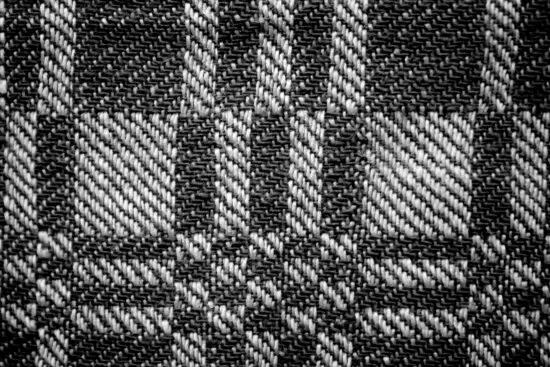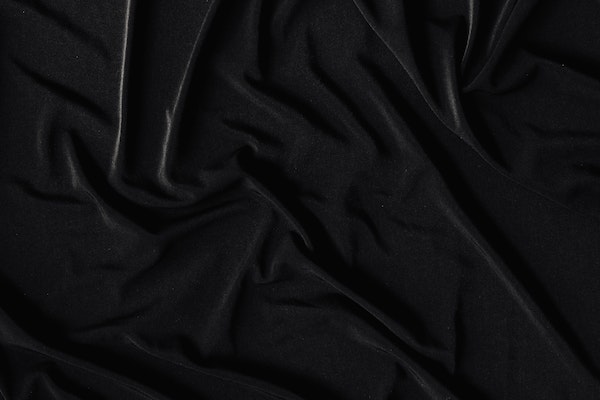How to Sew Ripstop Nylon Fabric in 2023: tips and tricks
Getting started with sewing can be intimidating and confusing, but don’t worry – we’ve put together this guide on how to sew ripstop nylon fabric.
Ripstop fabrics are the most robust and puncture-resistant fabric you can buy, so it’s no surprise they’re trendy in military gear.

In this article, we’ll walk you through the steps of sewing with ripstop material and other helpful tips for getting started on your first project.
What is Ripstop Nylon?
Ripstop nylon fabric is a type of nylon fabric made from two different types of thread woven together.
Because ripstop nylon fabric is made from two different threads, it has a higher strength-to-weight ratio than other types of nylon fabrics.
The product is ideal for use with items that need to resist tear or wear. The result is a sturdy, weatherproof fabric.
Ripstop nylon fabric is also versatile. The application includes clothing and accessories. Because it resists water and dirt, ripstop nylon is ideal for outdoor activities such as hiking and biking.
Additionally, ripstop nylon can be used in clothing and accessories for colder climates. As such, it provides an excellent option for items such as winter coats and hats.
Ripstop nylon is an excellent option if you’re looking for a versatile and weatherproof fabric. Whether you’re using it for clothing or accessories,
Why is ripstop nylon so popular?
There are a few reasons why ripstop nylon is so popular. First of all, it is extremely durable. Secondly, it has a high tear strength, which can resist being pulled apart easily.
As such, it is perfect for use on items that need to withstand damage, such as tents or backpacks. Rippled nylon fabrics are particularly versatile – they are also used for both.
What are the different types of ripstop nylon fabrics?
There are many types of ripstop nylon fabrics. The most common types are woven-and-bonded, bonded-and-woven, and pressure-treated.
Weave and Bonded: This ripstop is made by weaving two layers of nylon fabric together. The inner layer is a woven fabric, and the outer layer is a bonded fabric.

It creates a durable, tough material that withstands lots of wear and tear.
Bonded and Woven: In this ripstop, the inner and outer layers are woven together. The advantage of this ripstop is that it has a more consistent texture.
Because of this, it is easier to sew and less likely to fray.
Pressure Treated: This ripstop is treated with pressure to make it resistant to tears. This fabric is ideal for outdoor use because it is water-resistant and weatherproof.
How does ripstop nylon differ from other types of nylon fabrics?
Ripstop nylon has two layers: the outer layer is made from polyester, and the inner layer is made from cotton. Ripstop nylon fabric is very durable because of this and its multiple layers.
In addition, the threads in ripstop nylon are very tightly woven, further enhancing their strength and durability.
What you will need to sew ripstop nylon
To sew ripstop nylon, you will need the following:
-Ripstop nylon fabric
-Tape measure
-Seam ripper
-Iron
-Pins
-Thread
-Sewing machine with a zigzag stitch
-Fabric glue or double-sided tape
How to Sew Ripstop Nylon Fabric
Ripstop nylon is a great option if you’re looking for a durable, weather-resistant fabric for your next project. Here’s how to sew it successfully:
1. Draft the pattern according to the desired size and shape. Ripstop nylon is very forgiving, so don’t be afraid to make some adjustments along the way.
2. Cut out the fabric pieces and press them before sewing them together. These properties will keep the seams strong and resist wear and tear.
3. Sew the fabric together using a straight stitch or a zigzag stitch, depending on your machine’s capabilities. Use a seam allowance of at least 1 inch (2.5 cm).
4. Make sure all the seams are closed using right-angle or zigzag stitches, then press the fabric pieces firmly before wearing or using them in your project.
5. Ripstop nylon is a durable fabric that can handle a lot of wear and tear. If necessary, you can machine-wash the material in cold water with a mild detergent and dry it in the sun or on low heat.
Ripstop nylon is a great option if you’re looking for durable and weather-resistant fabric.
Risks of Sewing Ripstop Nylon Fabric
When sewing ripstop nylon fabric, there are a few things to keep in mind to avoid potential risks.
The most important thing is to use a needle with a large and strong eye. Be sure you don’t pull the fabric apart when you use a needle.
Another precaution is ensuring the fabric is properly prepped before sewing. The process includes removing any wrinkles or creases that can cause problems when sewing.
Finally, it’s important to note that nylon fabric can be very fragile, so be sure to use care when handling it.
Tips for Sewing Ripstop Nylon Fabric
When sewing ripstop nylon fabric, it’s important to follow some simple tips to ensure a successful result.
1. Choose the right fabric weight and type
When sewing ripstop nylon, choosing a fabric weight appropriate for the project you’re working on is important. A lightweight fabric will be less durable than a heavy-weight fabric, so use caution when selecting your materials.
2. Seam allowances
When sewn together, seams should be 1/2″ wide. When cutting the pieces of your ripstop nylon fabric, ensure a 1/2″ seam allowance on all sides. Keep your fabric pieces from coming apart during sewing.
3. Use the right tools and techniques
When sewing with ripstop nylon, it’s important to use the right tools and techniques to ensure a smooth finish. For example, use a zigzag stitch when stitching along the edge of the piece of fabric, so you don’t end up with wrinkles or holes in your finished product.
4. Evenly distribute the tension when sewing
When sewing ripstop nylon, it’s important to distribute the tension evenly so the fabric doesn’t stretch or pull away from the seam. Ensure a smooth finish and long-lasting garment with this technique.
5. Test your fabric before beginning
Before starting your project, test the fabric to ensure it’s the right weight and type for the job. The outcome will be successful with this solution.

These are just a few tips to help you sew ripstop nylon fabric successfully. Be sure to follow these guidelines, and you’ll be able to create high-quality garments that will last.
How to make a ripstop nylon fabric
There are a few different ways to make ripstop nylon fabric. The simplest way is to use a serger. You can also use a sewing machine, but it will be more difficult.
To make a ripstop nylon fabric using a serger, you first need to purchase a serger. Online or in-store, they are available.
Then, you will need to select the correct thread for your fabric. For ripstop nylon fabric, you will need a lightweight thread.
Next, you will set up the serger and adjust the tension according to the instructions that came with your machine. You will then sew the fabric together using the zigzag stitch.
To make a ripstop nylon fabric using a sewing machine, you will need to purchase a sewing machine. Online or in-store, they are available.
Next, you will need to select the correct thread for your fabric. For ripstop nylon fabric, you will need a lightweight cable.
Then, you will set up the sewing machine and adjust the tension according to the instructions that came with your device. You will then sew the fabric together using the zigzag stitch.
It might also be necessary for you to seam seal the fabric, depending on your sewing machine.
How to care for ripstop nylon fabric
When sewing ripstop nylon fabric, it is important to take care of the fabric to keep it looking its best. Here are some tips for caring for this type of fabric:
1. Do not expose the fabric to sunlight or heat. Exposure to these elements can cause the fabric to fade or become brittle.
2. Avoid washing the fabric in hot water or with harsh detergents. Doing so can damage the fabric and cause it to tear more easily.
3. If you need to wash the fabric, only do so with mild soap and gentle agitation on a cool cycle. Overwashing can cause the material to become wrinkle-resistant, but it may also lose colour and stiffness.
4. Keep the fabric looking sharp with only high-quality fabric finishing products. The fabric will look its best if stitches are hidden in this way.
5. To prolong the life of your ripstop nylon fabric, store it in a cool, dry place.
Hopefully, these tips will help keep your ripstop nylon fabric looking its best and lasting longer.
Conclusion
Sewing ripstop nylon is a great way to add an extra layer of protection to your projects. This fabric is designed to resist tears and has a high tear strength.
Additionally, it provides good UV resistance and can be used for various outdoor applications. If you are new to sewing with this type of fabric, our guide on sewing ripstop nylon will teach you everything you need to know.
Is ripstop nylon easy to sew?
Yes, it is easy to sew. You need to remember to use the pre-determined seams and not try to do it yourself. Make sure the fabrics are correctly matched, and you will be able to sew ripstop nylon fabric like a pro.
What needle should I use to sew the nylon ripstop?
Sewing with a high-tension needle will ensure the best results when sewing nylon ripstop. If you are new to sewing with nylon, we recommend selecting a lightweight needle which will make the fabric more forgiving.
Does ripstop nylon need to be hemmed?
There is no need to hem ripstop nylon. Hemming may cause stretching and reduce the lifespan of the fabric.
Can a sewing machine sew nylon?
Yes. You will need to ensure that the machine has a zigzag or overlock stitch option, as nylon can stretch and cause instability in the threads.



